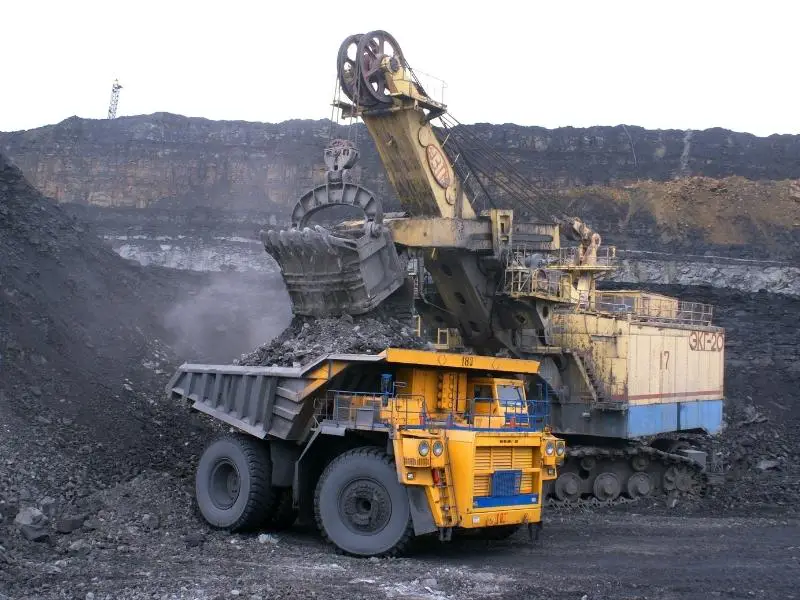Biomass has been touted as one of the most promising solutions to the search for renewable energy sources that can compete with the fossil fuel industry. But why is biomass a better alternative to coal?
We take a look at why it should and shouldn’t be considered a better alternative;
- Biomass is any plant-derived organic matter
- Examples include wood and agricultural crop wastes and residues, aquatic plants, and other waste materials.
- Biomass is considered a carbon-neutral alternative to coal because the carbon absorbed by living plants offsets the carbon emissions.
Using biomass as an alternative to coal is considered an easy fix for reducing carbon emissions during energy production.
Many countries are repurposing old coal power plants for burning wood pallets. But can biomass fulfill its promise to alleviate the worst effects of climate change?

What Is Biomass?
Biomass is any plant or animal material used as a fuel for producing electricity or heat—using farm or forest waste, wood, or energy crops.
Some examples of biomass include herbaceous and woody energy crops, agricultural food and feed crops, agricultural crop wastes and residues, wood wastes and residues, aquatic plants, and other waste materials.
Commonly described as carbon neutral, biomass sources will theoretically release as many carbon emissions when burned as they absorb from the atmosphere when they grow.
This process of growing plants, burning them, and regrowing them is known as a “closed carbon cycle”.
Why Is Biomass A Better Alternative To Coal?
Biomass, from wood, in particular, is considered a two-birds-one-stone solution to forestry industry reforms and as a quick solution to eliminating the most carbon-heavy electricity generating resource, namely coal.
It is regarded as an easier way to replace fossil fuels, primarily because it’s easier to repurpose a coal power plant for biomass production.
In the last 20 years, biomass has been adopted as an alternative energy source to varying degrees in many parts of the world. These countries include the United States, the United Kingdom, and other countries in the European Union.
Unlike moving towards wind, solar, or geothermal power, it doesn’t require a complete infrastructure overhaul. Due to the commitments made by countries around the world to reduce carbon emissions, biomass is a quick fix that would require significantly less investment than the long-term shift to other renewable alternatives to fossil fuels.
Unlike fossil fuels, which are resources that have been compressed and created underground over thousands of years, we can regrow biomass sources over a few years., And the living plants that they’re harvested from actually capture carbon from the atmosphere, offsetting the emissions released from burning them.
However, there is also reason to believe that biomass isn’t all it’s made out to be…
Why Is Biomass Not A Better Alternative To Coal?
While biomass has been showing plenty of promise as an alternative energy source, there’s also evidence that shows that it isn’t as environmentally friendly as initially believed.
Much like the case of biofuels made from corn-based ethanol and palm oil-based biodiesel in the early 2000s, biomass hasn’t been as good for the environment as we initially thought.
A report from the UK Department of Energy and Climate Change (DECC) found that burning wood is bad for the environment. While the assumption is that biomass fuels are carbon neutral, it doesn’t consider the environmental impact from transport emissions, land-use change, and peat emissions.
Biofuels are not carbon neutral and may even be responsible for more emissions than the coal and other fossil fuels they replaced.
And while some organizations claim that they only burn old or wasted wood, they are using whole trees that power plants took from forests. So, not only are emission levels higher but carbon-capturing trees are lost in the process.
However, it must be noted that not all biomasses can be considered equals and what’s true for wood is not necessarily valid for aquatic plants, for example.
In other words, wood reclaimed from sawmills (such as offcuts, sawdust, and bark), construction wood waste, and dedicated energy crops have far more potential to impact the environment positively.
Still, biomass taken from whole trees that have been chipped and burned may be equally bad for the environment as coal is.
Other Promising Alternative Renewable Energies To Coal
Considering that biomass may not be a better alternative to coal, what are our other options? How does a world so dependent on fossil fuels move towards greener, cleaner, and more renewable energy sources? Here are a few of the other promising renewable energy sources:
Solar As An Alternative To Coal
Solar energy uses radiant light and heat generated by the sun to create electrical power. Various processes such as solar heating, artificial photosynthesis, solar architecture, photovoltaics, concentrated solar power (CSP), concentrator photovoltaics (CPV) make up the technology harness natural airflows and don’t require logical mechanisms that are used in solar panels to convert light into electricity.
It is widely believed that solar energy will be the primary renewable energy source of renewable energy in the long term.
Still, it has some downsides, such as when the day turns to night and solar panels lay dormant, generating no power after dark.
Battery storage is also an issue, and solar power doesn’t scale very well, meaning it is far harder to create infrastructure to energize millions of homes.
Wind As An Alternative To Coal
Wind turbines generate electricity similarly to coal plants, except that it harnesses natural airflows and doesn’t require any combustion.
It is also believed that wind production can, in the long-term, meet the current global power requirements five times over if wind turbines are strategically placed and widespread.
However, the power is generated from wind speed, which is unpredictable. And there needs to be far more storage capacity for the days when it isn’t windy, meaning it isn’t necessarily a reliable alternative energy source.
Hydroelectric As An Alternative To Coal
Hydroelectric power is generated from hydropower and currently makes up roughly 70% of all renewable energy sources worldwide. It is also a low-cost energy source, meaning that it can compete with coal power.
And hydroelectric power has been used since the late 18th century, during the Industrial Revolution, meaning it’s already established technology.
By generating power through turbines that turn when water is transferred from a dam to a reservoir or through pumped storage, run-of-the-river, and tide mechanisms, hydropower has an incredible power-generating capacity that could be as efficient as coal power and far less pollutive.
. Furthermore, the hydroelectric industry has vast, untapped potential, with plenty of hydroelectric capacity worldwide yet to be developed.
In North America, 75% of the potential hydroelectric capacity from dams and natural resources is unused due to a lack of infrastructure. This figure for Europe is 71%, in South America, it’s 75%. It’s 82% in Asia-Pacific and 95% for both the Middle East and for Africa.
This means that hydroelectric power has plenty of potentials to replace coal and power our homes in years to come.
Geothermal As An Alternative To Coal
Geothermal energy is another renewable energy source found in the earth’s crust generated from thermal energy created and stored in the ground.
It is the heat generated from the Earth’s core and reaches temperatures above 9,000°F (5,000 °C).
By harnessing the power created from the steam released from geothermal energy-rich locations, such as those in Iceland, we can harness this natural energy source without emitting any carbon whatsoever.
- Biomass as an alternative to coal | Global Energy Monitor Wiki
- Why is biomass a better alternative to coal? | Study.com
- Is Wood-Based Biomass Energy a Viable Alternative to Coal? | Triplepundit
- New Study Confirms That Some Biomass is Dirtier Than Coal | NRDC
- Biomass | Wikipedia
- Life Cycle Impacts of Biomass Electricity in 2020 | UK Department of Energy and Climate Change
- Renewable energy | Wikipedia




